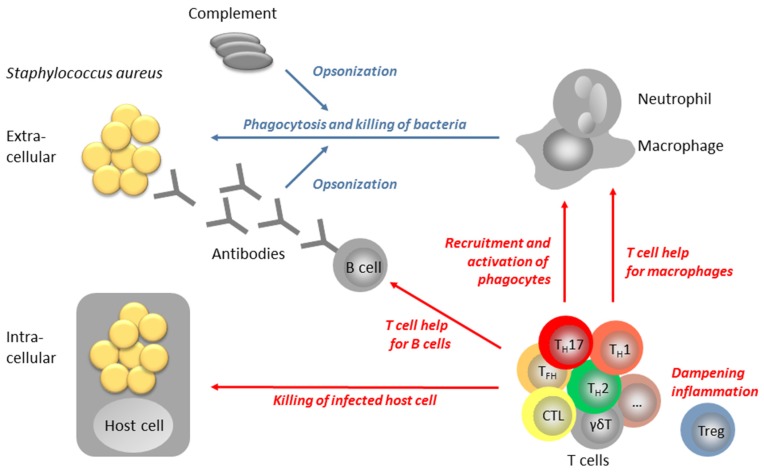Figure 1.
Model of the multifaceted role of T cells in anti-staphylococcal immune defense. The immune defense against Staphylococcus aureus crucially depends on the bactericidal activity of phagocytes, especially neutrophils and macrophages. Uptake and bacterial killing is greatly facilitated by opsonization of the bacteria by complement and/or antibodies. T cells can contribute to this process of opsonophagocytosis by: (1) providing help for B cells; (2) promoting the bactericidal potential of macrophages; and (3) recruiting phagocytes from the bone marrow to the site of infection. Once S. aureus has invaded host cells to persist in intracellular niches, cytotoxic T cells would be required to kill the infected cell, releasing S. aureus for a second round of opsonophagocytosis. Tregs have a vital function in dampening inflammatory processes and restoring homeostasis after resolution of the infection. CTL: Cytotoxic T lymphocyte; TFH: T follicular helper cell; TH: T helper cell; Treg: regulatory T cell.

